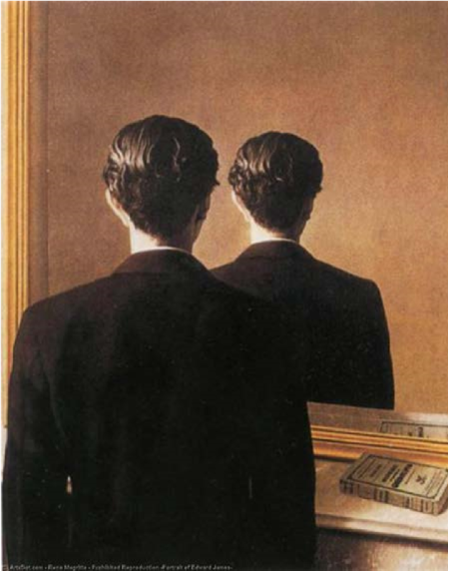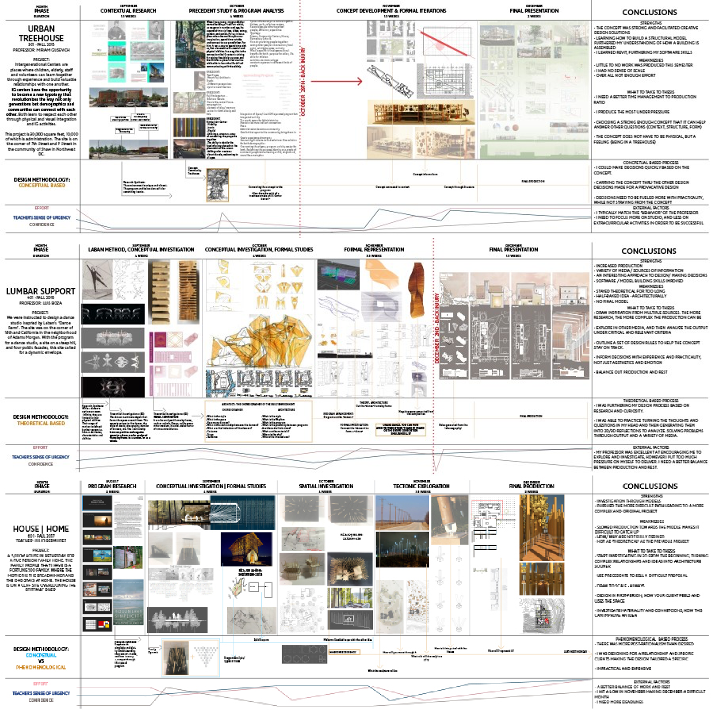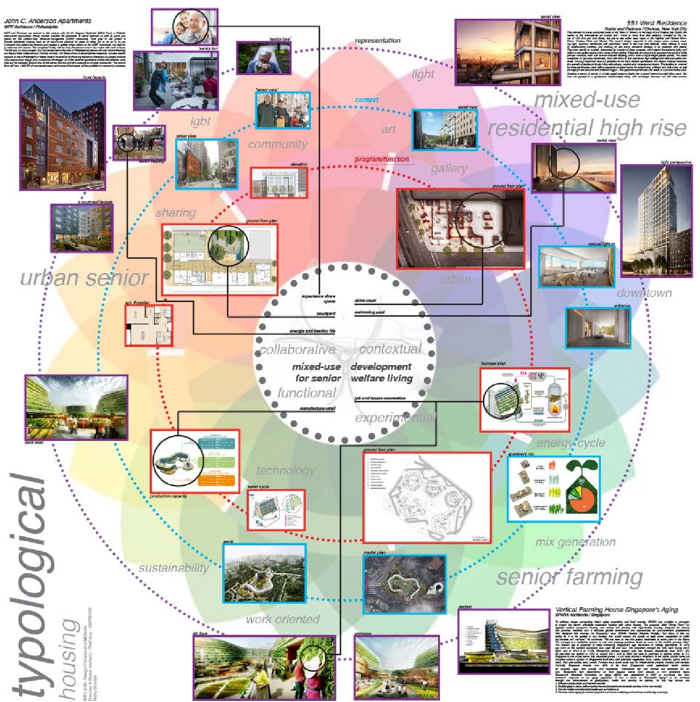Julio Bermudez
The Catholic University of America, Washington DC
bermudez@cua.edu
“Know thyself”
Carved in the entrance to the ancient temple of Apollo, Delphi.
“Knowing yourself is the beginning of all wisdom.”
Attributed to Aristotle.
“… learn the backward step that turns your light inwardly to illuminate your self. Body and mind of themselves will drop away, and your original face will be manifest.” Zen master Dōgen Zenji (Fukanzazengi).
Introduction
Despite the remarkable job that ACSF has done over the years, an area of great importance has received hardly any attention: education. Simply stated, only 2.9% of the total number of papers, projects, exhibitions, workshops, and lectures delivered in ten ACSF symposia (2009-2018) addresses pedagogic issues![1] Reasons may be concocted. Perhaps the silence has to do with the few courses on architecture, culture, and spirituality offered in schools of architecture, landscape architecture, planning, and the allied arts. However, whatever the cause, it is imperative for ACSF to actively encourage more focus in education. ACSF values, knowledge, and practices must be brought into our professional schools if we are to prepare future practitioners, educators, and scholars for responding comprehensibly and sensibly to the major challenges facing our civilization.
This paper addresses education by examining the final assignment of a graduate class on ‘design theory and methods’ that I have been teaching for 5 years. In this project, students are asked to practice the ancient injunction ‘know thyself’ —a time honored learning venture that leads to profound existential, cultural, and spiritual realizations. This dictum has been considered a central aim of education all the way back to ancient Greece. It certainly implies a ‘cultivation of the self’ that is closely tied to contemporary liberal arts education, as philosopher Mitchell Green articulates.[2] It also aligns well with the humanistic tradition in educational thought that considers
‘self-actualization’, after psychologist Abraham Maslow, the main objective of all education (Morris & Pai 1976, Roger & Freiberg 1994). Additionally, a pedagogy prompting ‘know thyself’ falls in line with a growing body of educational work arguing for the urgent necessity to deal with the whole person in our institutions of learning. See for example the case made by holistic (Miller 2005, 2007), integral (Esbjorn-Hargens et al 2010, Palmer & Zajonc 2010), contemplative (Barbezat & Bush 2014, Zajonc 2013), vocation-responsive (Clydesdal 2016, Cunningham 2017), and spirituality-driven (Fowler & Hochheimer 2012, Miller 2000, Moore 2005, Wane et al 2011) education proponents.

Figure 1: René Magritte, “Reproduction Prohibited (Portrait of Edward James),” 1937. The induction ‘know thyself’ is deceptively simple as anyone that has tried it learns firsthand. It takes tremendous discipline, clear methods, coaching, and time to begin to get results. Unfortunately, access to self-knowledge avoids us for quite some time, making us often feel like the man in Magritte’s painting.
Despite these references and arguments, many a reader may summarily dismiss my ‘know thyself’ educational undertaking for being subjectivist, individualist, nihilist, or worse. Before doing so, I hope they let me frame it within two other significant considerations. First, it takes place within a professionalist model of higher education (architecture) that by and large favors an externally oriented, material, practical, society-bound, non-contemplative, and certainly not selfcentered curriculum and learning process. Hence, it is at least arguable the necessity to develop some level of self-knowledge in the young adults we are sending into the world, particularly at the graduate school level. Second, the ‘self’ being referred to is not the egocentric entity we often associate with ourselves. In fact, it is a hope of this assignment to dispel such simplistic (and dangerous) understanding of who we are. By engaging in a systematic self-study, students grasp (or it is pointed out by the instructor) that what they consider as ‘self’ is actually a complex phenomenon that arises from interactions between body and world, individual and others. In other words, the self has a deep social and environmental nature. Additionally, students quickly figure that there are obscure and hard to reach layers to their selves as psychoanalysis has showed (Jung 1958). In fact, should the superficial trappings of ordinary ego be put aside, a transcendental being or space may be glimpsed, something that Christian and Buddhist teachings (to name two faiths) refer to as ‘soul’ or ‘true self’ (Thomas Merton’s words) in the former and ‘Buddha’ or ‘original’/‘true nature’ in the latter. But so do other ‘spiritual systems’ seeking human flourishing such as the well-known ‘Fourth Way’ of George Gurdjieff (Benjamin 1989) or the lesser-known ‘Bridging’ method (Block 2002). And for those still wondering how the seeming self-centered effort to ‘know thyself’ becomes the source of an all-encompassing spiritual realization, the words uttered by Zen master Dōgen Zenji nearly 900 years ago provide a pointer:
To study the Buddha Way is to study the self.
To study the self is to forget the self.
To forget the self is to be enlightened by the ten thousand things.
To be enlightened by the ten thousand thing is to free one’s body/mind and those of others.[3]
Assignment
The purpose of the ‘know thyself’ exercise is initially articulated using an instrumental rationale that is more palatable or understandable to the often reflection-adverse and job-minded graduate student: their need to cultivate self-assessment skills in order to improve performance (e.g., how, when, and why to use a tool, design method, or ideology over others) and guide their own growth as future architects (i.e., how to be mindful of their way to approach problems, think, and make decisions). Only at the end of the project statement, the highest pedagogical ambition is revealed: to turn the design process on itself so that it becomes a magic mirror on which the student may begin to know themself.
Specifically, the assignment requests students to painstakingly record the design process of three studio projects done during their architectural education. The selection of the case studies should be based on their capacity to illuminate decision making in the context of the learning conditions and life situations. Students must carefully organize the collected information graphically to facilitate the observation and comparison. Abandoned paths or poor decisions are as important as those taken or successful because they point at the person’s way to think, be, and act. Nonobjective (e.g., emotion, attitude, state of mind), social (e.g., teamwork dynamics, relation to instructor, other classes, studio/school culture), and extramural (e.g., job, relationship, health, other personal matters) conditions are also to be included in the visualization if they played an influential role. After documenting all this information in large sheets (several 24”x72” boards using matrices are common, although the format is up to the student), students are asked to step back, analyze, and reflect. Similarities, differences, patterns, and more are to be extracted and through them a portrait of the designer behind the projects is to be sketched. In addition, students are asked to explain the attained self-knowledge in a 20 minute oral presentation to a guest jury, and deliver a 500 word writing summary of their inquiry.
Students find this assignment very compelling and devote large amounts of time to it right away. There is little secret that for an ego-centered self, there is nothing more interesting than itself. This is an excellent means to get them going enthusiastically, fully engaged until the last 3 weeks of the 5 weeks long effort when, after putting up all their work in a graphic format, the real tough questions and inquiry begins. Not surprising, most students are reluctant to pin up their inprogress work for discussion as they (rightly) intuit that some part of them will be exposed, thus revealing to peers and faculty hitherto concealed dimensions of themselves, particularly those associated with personal weaknesses or quirkinesses. However, after a few reviews, students notice that there are plenty of behavioral, mental, emotional, and other commonalities in the human self. They also realize that everybody has flaws and limitations and that there is nothing to worry about except being ignorant about them. In fact, they learn (sometimes to their surprise) that their peers and teacher often already knew what they were so worry to reveal!

Figure 2: Work by graduate student Madeline Amhurst (Fall 207)
At the same time, despite the commonalities, it quickly becomes evident that each student has their own strengths and weaknesses, way to approach problems, affinity to some design methods and strategies and aversion to others, set of communication tactics and media preferences, pattern in their time and resource management, unique behavioral triggers, manner to collaborate or go about research, attitude toward authority, things they fear, avoid, or stress about, rewards and expectations they seek, ideas of self-worth, etc. The combination of these characteristics outlines a personal profile of the student-designer (first) and the student-self (if probed deeper). Because each individual inquiry takes place along with that of others and in the open, students begin to know themselves in relation to their peers noticing, for example, whether they are more or less rational, controlling, articulate, extravertive, ethically focused, conceptual, argumentative, precise, intuitive, experiential, service-driven, timid, or conservative than this or that peer or the group. The teachings of Martin Buber (1970) loom large.

Figure 3: Work by graduate student Pedro Gomide (Fall 2015)
The ‘know thyself’ project ‘triangulates’ the study of the self by means of three different but complementary perspectives. By externalizing their responses to design challenges, students take a third-person viewpoint on how they make decisions in the context of their learning environments and life situations. Since they have lived through such experiences, they already have the first-person account on what the situation felt like from within. And last but not least, by recognizing common patterns among all the students in the class (them included), they gain a second-person perspective that affords empathic, compassionate, and contextual understandings of themselves and others. By practicing how to access and integrate these three perspectives of the self, this method offers students a sophisticated and lasting way to approach the neverending task of learning who they are.
Reflections
The ultimate intention of the ‘know thyself’ exercise is to offer students, if not an emancipation from the tyranny of their small self (ego), at least the realization of their lack of basic selfknowledge and the need and benefit to do something about it. Since this is hard medicine to administer and take, the course spends the prior 10 weeks preparing students for it. Two earlier assignments are used to reveal fundamental tools and contexts students take for granted and condition their every design (and other) action and thought without their knowledge and therefore consent. The first of such preparatory tasks demonstrates the serious limitations of the intellect and reason in design by means of a deceptively simple hands-on exercise. In an educational system that overpraises thinking and leads to what Susan Sontag warned us about and called today’s “hypertrophy of the intellect,” this teaching is a radical act that, not surprising, is often initially resisted. The second assignment exposes the ideologically tinted world students have been indoctrinated in (by professional education) and operating from without their awareness. By making obvious the structural bias behind all design methodology, attitude, and work, architecture students lose their innocence but gain maturity. After such double awakening (from intellectual and ideological bondage), students are ready to face the closest and possibly most dangerous of all blindnesses: themselves. The third and final assignment thus makes the(ir) self opaque to observation and therefore possible for them to deal with.

Figure 4: Work by graduate student Robert Tomas Vince (Fall 2018)
Students are always dumbfounded by facing an objectified picture of their acting selves, almost as if seeing themselves in the mirror for first time. As a result, powerful discernments are often shared by students. But, as usual, not all of them go deep enough to see overarching patterns in their behaviors, thoughts, emotional responses, social interactions, interests, frustrations, and so on. Still, students universally report appreciation for this assignment although, many forget about it in the following semesters and need reminding by the faculty (especially during thesis). Many graduates from our architecture program with two or more years in the ‘real world’ recognize the ‘know thyself’ project as being a key moment in their graduate education.
A reason behind the popularity and success of this assignment has to do with the liberating and humanizing journey that students undertake. It certainly frees many of them from gross misconceptions about what a good designer is, how decisions are made, and the role of ordinary life in professional endeavors. Indeed, the project casts light on important factors that affects everybody when dealing with design tasks yet we avoid recognizing: our relationships (family, friends, partner), personal attitudes and beliefs about the world (and architecture), social milieu, interaction with authority, self-image, cultural expectations, daily practices (wherever they may be), spiritual inclination, and so and so forth. In other words, the ‘know thyself’ project makes abundantly clear that the designer-person is a complex, multi-faceted human being, a realization that gives students the opportunity to identify and dive into their self-person in empowering ways. Questions regarding vocation, life’s purpose, the meaning of professional work, and more are often and naturally raised by the students.
By bringing together students’ outer life (their response to curricular demands in a socio-cultural environment) and inner life (emotions, meaning, commitments, intentions, love, hopes, faith, and fears), this educational effort advances an ‘integral education’ that seeks to heal what Palmer and Zajonc (2010) refer to as the great divide that undermines higher education today: the schism between learners’ inner and outer worlds. If education is to be true to its highest aspiration, it must engage the whole human being in the learning process. For too long an instrumentalist, rationalist, object-focused, and spirituality voided curriculum and pedagogy have dominated architectural education. It’s time to balance, complement, and/or enrich it through alternative learning experiences such as the one shared in this paper. Perhaps it’s time to turn the light inward!
References
Barbezat, Daniel P. and Mirabai Bush. Contemplative Practices in Higher Education. San Francisco, CA: Jossey-Bass, 2014.
Benjamin, Harry. Basic Self-Knowledge. York Beach, Maine: Samuel Weister, Inc., 1989.
Block, Stanley H. Bridging the I-System. Ashland, OR: White Cloud Press, 2002.
Buber, Martin. I and Thou. Translated by Walter Kaufmann. New York: Touchstone, 1970.
Clydesdale, Tim. The Purposeful Graduate. Why Colleges Must Talk to Students about Vocation. Chicago, IL: Thc University of Chicago Press, 2016.
Cunningham, David S. Vocation Across the Academy. A new Vocabulary for Higher Education. New York: Oxford University Press, 2017.
Esbjorn-Hargens, Sean, Jonathan Reams, and Olen Gunnlaugson. Integral Education: New Directions for Higher Learning. Albany, NY: SUNY Press, 2010.
Fowler, Martin, John D. Weiss, and John L. Hochheimer. Spirituality: Theory, Praxis and Pedagogy. Oxfordshire, England: Inter-Disciplinary Press, 2012.
Jung, Carl. The Undiscovered Self. Boston, MA: Little, Brown and Company, 1957.
Moore, Thomas. “Educating for the Soul.” In The Holistic Curriculum, edited by J. P. Miller, John P., S. Kasten, D. Denton, D. Orr, and I. Colalillo Kates, 9-15. Toronto: Univ. of Toronto Press, 2005.
Miller, John P. Education and the Soul. Toward a Spiritual Curriculum. Albany, NY: SUNY Press, 2000.
Miller, John P. Holistic Learning and Spirituality in Education. Albany, NY: SUNY Press, 2005.
Miller, John P., Selia Kasten, Dianal Denton, Deborah Orr, and Isabella Colalillo Kates. The Holistic Curriculum. Toronto: University of Toronto Press, 2007.
Morris, Van Cleve and Young Pai. Philosophy and the American School. Boston, MA: Houghton Mifflin Co, 1976.
Palmer, Parker J. and Arthur Zajonc with Megan Scribner. The Heart of Higher Education. A Call to Renewal. San Francisco, CA: Jossey-Bass, 2010.
Sontag, Susan. Against Interpretation and Other Essays. New York: Picador, 1966.
Roger, Carl R. and H. Jerome Freiberg. Freedom to Learn. Pearson, 1994.
Wane, Njoki N., Energy L. Manyino, and Eric J. Ristkes. Spirituality, Education & Society. An integrated approach. Boston: Sense Publishers, 2011.
Zajonc, Arthur. “Contemplative pedagogy: A Quiet Revolution in Higher Education,” New Directions for Teaching and Learning 134(Summer 2013): 83-94.
[1] 222 papers or projects, 33 lectures, 1 exhibition, and 12 workshops have been presented/offered in ten ACSF symposia. Of all these efforts (totaling 268), only 8 or 2.9% directly cover educational topics related to architecture, culture, and spirituality. Data collected from the ACSF website: http://www.acsforum.org/acsfsymposia/ (accessed Jan 12, 2019)
[2] Best, Kenneth, “Know Thyself: The Philosophy of Self-Knowledge” (Interview of Mitchell S. Green), UConn Today, Aug.10, 2018. URL: https://clas.uconn.edu/2018/08/10/know-thyself-the-philosophy-of-selfknowledge/# (accessed on Jan 12, 2019)
[3] Another translation clarifies this quote. “To study the Buddha Way is to study the self. To study the self is to forget the self. To forget the self is to be intimate with the ten thousand things. To be intimate with the ten thousand thing is to free one’s body and mind and those of others.” Lama Surya Das, Make Me One with Everything (Boulder, CO: Sounds True, 2015), 117-18



